I haven’t really traveled for a tournament in quite some time. The break has been nice, but this competitive itch just won’t go away. I took solace in the
fact that November is full of Opens and GPs and has finally arrived. On the docket is #SCGPHILLY and GP Pittsburg. I was planning on attending #SCGNJ, but
I don’t think I’ll have the mental or physical energy for a complete month of travel. That said, I’m taking all of these events very seriously, and I’ve
put in the prep work for Standard, but I have a long way to go for Battle for Zendikar Sealed. I usually just pop up without much Limited practice
and end of making top 32 of the GP with a couple 2-1 records in the drafts, which is never the goal. I can even specifically link a few win-and-ins lost
due to a lack of familiarity with the format. For the upcoming events I will try to eliminate that factor prior to the trip and maybe spike a GP top 8. For
all the success I’ve had in this great game, the biggest skeleton in my closet is the lack of success I’ve had at the GP level. This is the main reason for
making the long voyage to these upcoming events, and if all goes well, it’ll pay off soon.
Back to Esper…
In Standard, I have the tried and true Esper Control, which hasn’t changed much since the release of Battle for Zendikar. I realized the glaring
weakness of Clash of Wills and discussed that in great detail a few weeks ago, then replaced it with Despise and
haven’t looked back since. Despise is a fantastic card to have game 1, and I’m hard-pressed to recall a game where I lost after landing a Despise to remove
a threat in the earlygame. My numbers against Jeskai Black, G/W Megamorph, and Abzan variants are good enough for me to stamp the seal of approval and rush
into battle. I did a matchup breakdown after testing in my last article, and today we will go through all of the sideboarding necessary to come out ahead.
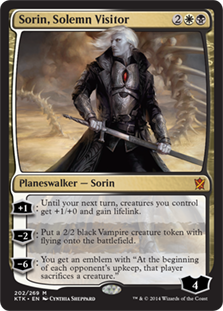
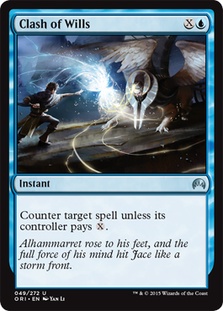
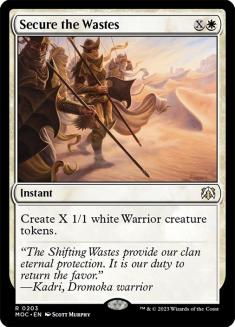
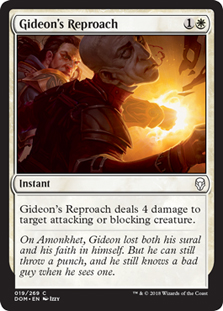
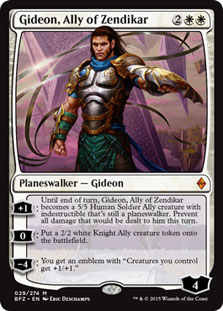

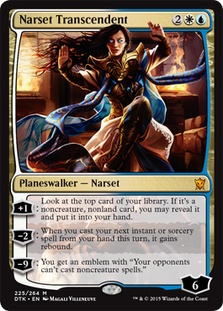
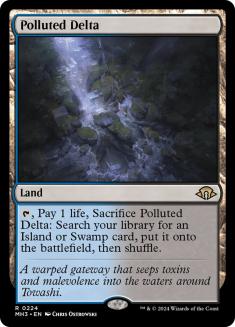
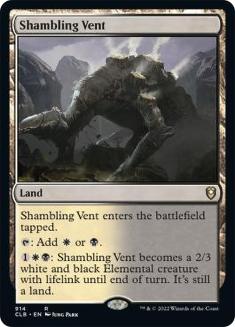
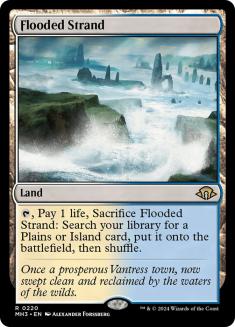
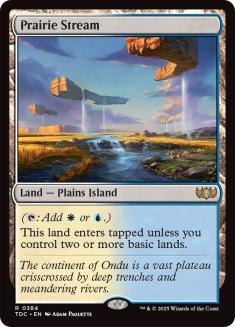
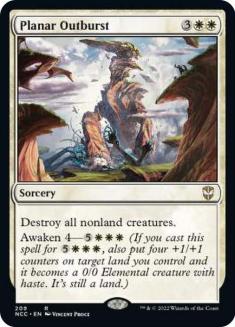

My Esper list has only changed by two cards. I’ve dropped Sorin, Solemn Visitor from the maindeck, a move that has been in the works for quite some time.
He simply doesn’t cut it in a deck like this, though if I were to play a more token-based strategy without blue, he’d be an all-star. In Esper Control,
Sorin, Solemn Visitor doesn’t have the built-in protection required for a planeswalker in the current format. Gideon, Ally of Zendikar’s protection seems
shaky at best; however, the four loyalty (over the two loyalty of Sorin) makes all the difference. I replaced the vampiric planeswalker with one copy of
Secure the Wastes, and I’ve been pretty happy with it. As Patrick Chapin, Reid Duke, PVDDR, and a few other big shots came around and joined the Esper
life, they’ve toyed with some copies of the Standard version of Decree of Justice. It helps close games out with a little assistance from Gideon, Ally of
Zendikar, which some of them still don’t play. It is unlikely that I ever sleeve up Esper Control without multiple copies of the newest, baddest
planeswalker, so enjoy the synergy my friends.
The only other addition was a Gideon’s Reproach in the sideboard. It gives a nice bullet answer to Mantis Rider and comes in against most aggressive decks.
I found that packing multiple copies of these early in testing was pretty bad because of how easy it is to play around them. One copy gives that surprise
factor and gives a minor edge after if you can represent having more.
Here is the most updated list:
Creatures (5)
Planeswalkers (4)
Lands (26)
Spells (25)

One of the toughest aspects of the game that I regularly emphasize is sideboarding. The creator of the sideboard knows exactly which cards are good in
specific matchups, but when someone else picks up the list to battle, they often struggle with sideboarding. Arashin Cleric has obvious applications
stamped all over it, but cards like Fathom Feeder may not be used properly. I’m going to give you all the key to the Esper code by explaining the weak
cards in each matchup and the strong bullets that replace them.
VS Esper Control
Out:
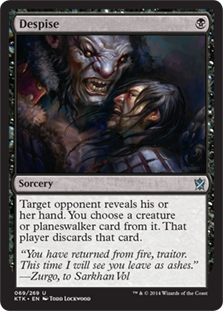



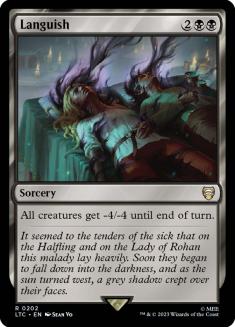


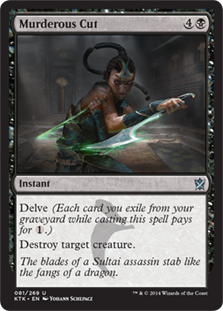

In:


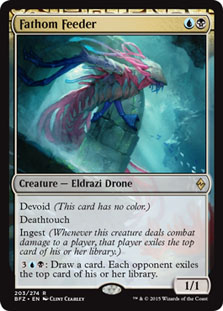

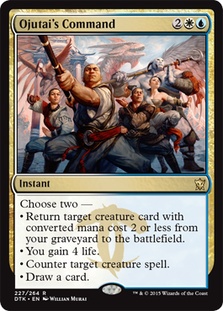

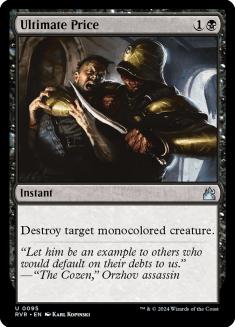


In the Esper Control mirror, I’ll usually leave in one mass removal spell as an insurance policy. They could be packing Secure the Wastes; Gideon, Ally of
Zendikar can get out of hand; and/or a Silumgar, the Drifting Death somehow resolved. It is always a good idea to have a way out of a sticky situation,
especially in a matchup as good as this one. The powerful sideboard cards are pretty clear with Negate and Narset Transcendent, but let’s look at the other
contestants.
Fathom Feeder may be the most underrated, powerful control killer lurking around in the entire 75. It provides a removal spell for problematic
creature-lands and puts a massive clock on your opponent with imminent card advantage at your fingertips. The matches where my Fathom Feeder was not
removed, when the boardstate was fairly even, were not close. Even Ugin, the Spirit Dragon can’t come in and wipe Fathom Feeder-plus-Narset Transcendent
off of the board, and that situation has come up more than once.
The Ojutai’s Command is another big player in the formula for defeating the control mirror. It isn’t the card drawing or Essence Scatter effects that make
it happen; it’s the cutthroat war from the early turns to the end, all with the goal of resolving and protecting Jace, Vryn’s Prodigy. I sideboard out
Despise and bring in a more consistent answer in Ultimate Price to deal with their copy of the cheap planeswalker early on. We may get lucky and nab a
Tasigur, the Golden Fang, but more than likely, Ultimate Price has one name on it. The reason for dropping Despise is not for its ineffectiveness, but
because there isn’t room after sideboard. Each card in the deck after sideboard plays a vital role, and having a Hail Mary for six to ten cards is simply
not worth it.
Languish and Murderous Cut also get dropped, but for much more obvious reasons. Neither card has a huge impact on this matchup and is replaced with a much
more cohesive, sensible strategy. Disrupt your opponent, slam Narset Transcendent and protect it is a road I’ve walked many, many times.
VS G/W Megamorph
Out (on the play):
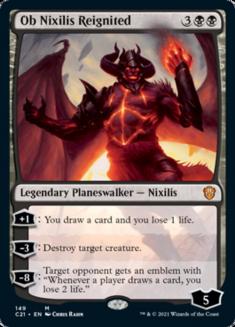

In (on the play):


Out (on the draw):




In (on the draw):




There isn’t a whole lot of sideboarding going on in this matchup. The maindeck is already very well-positioned to battle G/W Megamorph (and other green
midrange decks) with the power of Languish and Dig Through Time. G/W Megamorph relies on the same old tricks they’ve used for a while now: try to grind out
control players with Deathmist Raptor and Den Protector. It’s much harder for them to do this now because of cards like Despise, Ojutai’s Command, and
Jace, Vryn’s Prodigy rebuying sweepers and removal, and the ultimate power of Gideon, Ally of Zendikar to close out the game in a hurry.
I didn’t add G/W Megamorph as a specific concern in the last article because I hadn’t interacted with it much. Now it seems to be one of the more popular
decks, and luckily, our maindeck has it under control. The sideboard just lowers the curve on the draw with help from a fourth Languish, a copy of Ultimate
Price, and a Fathom Feeder. These all replace cards that aren’t necessarily weak, but are just a tad on the pricey side. We will win the long game with Dig
Through Time, but we have to make it there first.
I loved bringing in one Infinite Obliteration to name Deathmist Raptor or Den Protector, but realized I was beating it without the gimmicky bullet. If the
matchup ever becomes more difficult due to their hate cards, bring in a copy and extract the biggest threat to your survival. I tend to leave Infinite
Obliteration out against decks that aren’t packing Eldrazi or four copies of Dragonlord Ojutai.
VS Abzan Aggro
Out:



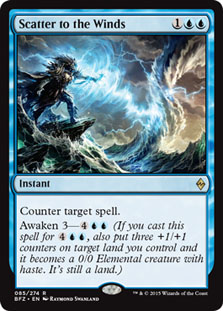



In:







We have finally gotten over the fact that Ultimate Price is bad against aggro because of the power of Warden of the First Tree. That little one-drop can
cause a headache for us and a great answer to him is present in the sideboard. There are other threats that fall into the mono-colored category, so using
Ultimate Price is a pretty easy choice. This is another example of how the curve gets lowered, and it sadly involved me cutting some of my favorite cards
in the deck. Narset Transcendent will sometimes get snuck back in on the play if I feel as if my Abzan opponent reduced the speed of their clock after
sideboard, but besides that, it’s a pretty universal plan. Scatter to the Winds is simply too slow to keep in on the draw, and the debate for leaving a few
in the maindeck on the play can occur. After sideboard, we just want to clear the way from turns 2-5, and Scatter to the Winds only plays a role in that
strategy if an opponent’s hand is weak and ours is strong. On the play we could nail their two-drop with a Despise, they whiff on their draw, and we ready
the counterspell on the empty board. I like to play it on the safe side instead of prepare for this scenario.
VS G/R Eldrazi
Out:




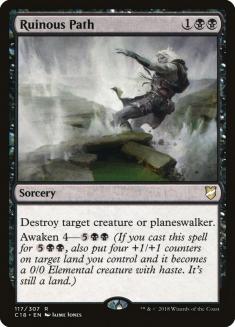


In:

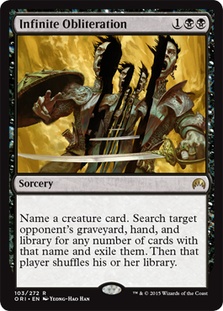





Ruinous Path is one of the clear stinkers in this matchup. You’d think it’d be a fine card to disrupt the early mana creatures and eventually answer an
Ugin, Spirit Dragon, but this matchup requires a different line of attack than the normal ramp decks. In the past, control has been able to step backwards
carefully against ramp decks and then answer their big haymakers. The power of Ulamog, the Ceaseless Hunger is undeniable, and it forced my hand when
crafting the newest version of Esper Control. Infinite Obliteration is a card that completely derails their plan after they’ve retrieved a large number of
Forests and gained a lot of life. It takes forever for us to kill them, but victory is very easy after removing their Eldrazi, summoning a Fathom Feeder
for Gaea’s Revenge, and only countering Ugin, the Spirit Dragon or Dragonlord Atarka in the lategame. Cards like Despise, Narset Transcendent, and Jace,
Vryn’s Prodigy also decimate the competition and are all reasons why I am attending a Regional PTQ next year.
VS Atarka Red
Out:













In:
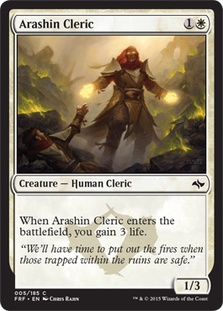







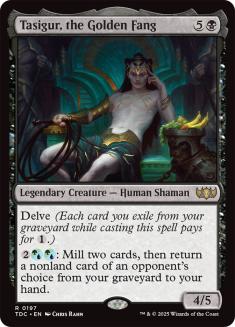




This is the more transformative approach required for modern-day control decks if they want to survive the aggro menace. Nearly every card brought in is
obviously great against them except Negate. Negate is actually an all-star against hyper aggressive decks because it is the cheapest way to disrupt their
small arsenal of devastating spells against us. Cards like Kolagan’s Command and Atarka’s Command are ruthless when cast in certain situations, which
Negate can stop easily. I’ve even stopped a few Titan’s Strengths that targeted a critter blocked by Tasigur, the Golden Fang that lead to an immediate
victory. The cards removed are also pretty obvious, removing the high mana cost and/or variance attached to some spells. Despise may not be terrible
against the most aggressive decks, but it’s definitely not good. Whiffing on our discard spell can bring loss right after, but when it’s a spell that helps
stabilize the board or life totals, it almost feels like clockwork. Sideboard games against these blitz decks feel magical, and it seems that if you don’t
get mana screwed, any combination of spells assures victory. It’s the typical situation with a game 1 loss and the sideboard victory, but you have to make
sure you sideboard correctly due to the amount of transition the deck must go through to have an edge against the fastest decks.
VS Jeskai Black
Out (on the play):







In (on the play):







Out (on the draw):









In (on the draw):









This is one of the toughest matchups for the deck. In my last article, I placed this deck in the 50/50 column. Mantis Rider game 1 and the countermagic
with card draw game 2 and 3 makes the deck a formidable foe for control players everywhere. Decks that can pack a punch and disrupt our disruption have
always been difficult, but luckily, with the systematic weakening of control cards, those Delver/Faerie/Caw-Blade decks may be extinct. Every card
sideboarded in has a clear effect on the cards from Jeskai Black. When sideboarding, you must realize how different it is to be on the play versus the
draw. On the play, we can keep in our high powered planeswalkers and spells with a few of the clunkier cards cut. Despise is a must have on the draw,
stopping Mantis Rider and Jace, Vryn’s Prodigy early. On the play, we can simply nail a Mantis Rider with a well-timed Scatter to the Winds instead of
depending on shaky hand disruption. Their deck isn’t full of targets for Despise; however, there isn’t much of a choice for this situation. Fathom Feeder
is at its weakest point here and can’t help us stave away threats that fly overhead, and the same rule applies for Secure the Wastes. On the draw, we play
the role of the reactive control player, and on the play, we turn proactive right after turn 3. The game usually boils down to a topdeck war after
sideboard, which is the reason this matchup is so close. Control has the edge when playing off the top most of the time, and if the Despises are removed,
those chances are even greater.
Overall, the matchups for Esper Control are still in the positive column, and I am beyond stoked to keep working on this deck for #SCGPHILLY. Here’s hoping
I see some of you there!

